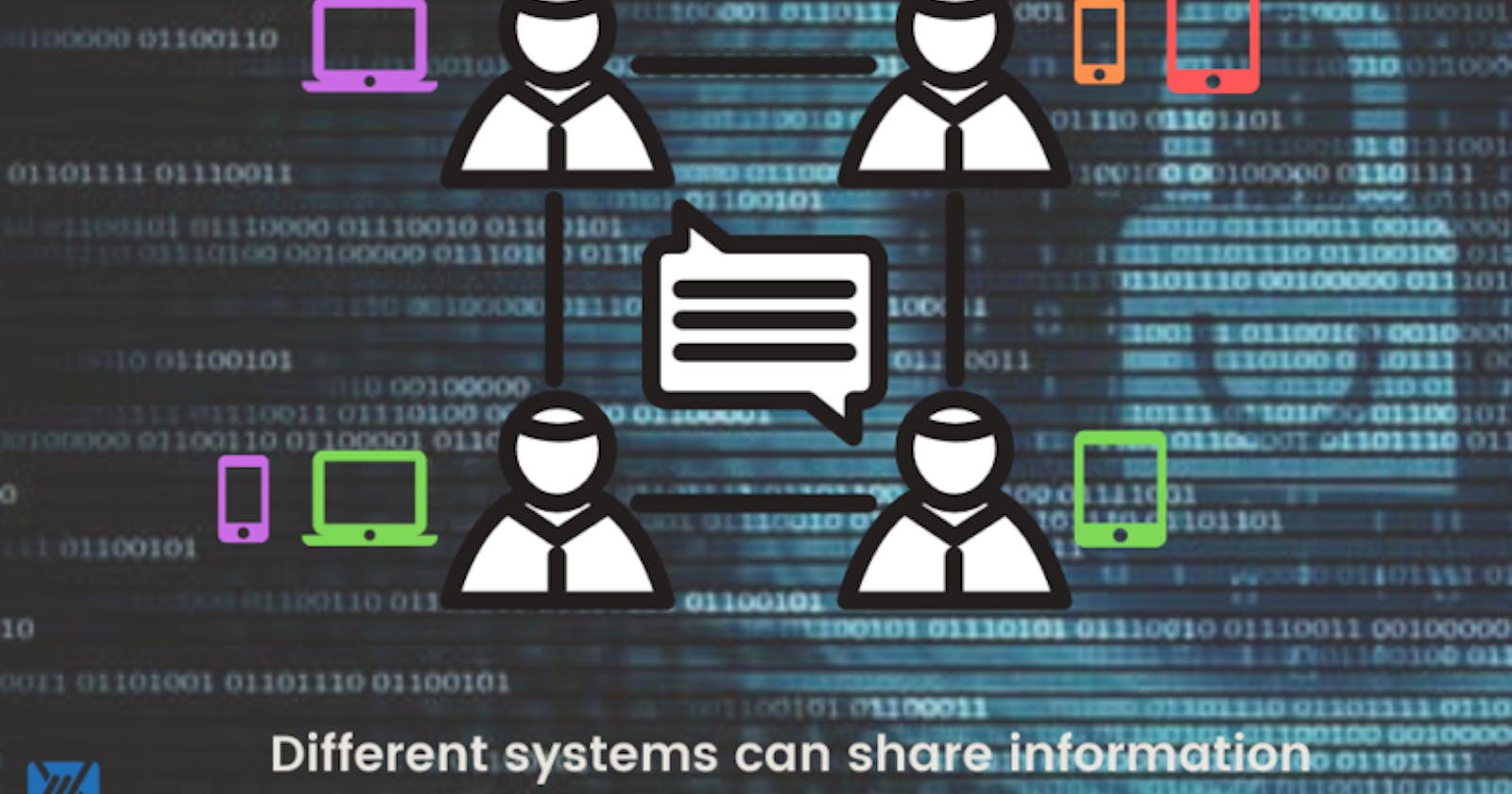Have you ever wished you could move your music playlist from Spotify to YouTube Music because of it's better sound quality or vice versa, or move your data from one platform to another? Yeah, Web5 comes in handy here.
In today's digital landscape, data sharing and collaboration are essential for individuals and organizations to work together effectively. However, ensuring seamless interoperability and maintaining data privacy can be challenging. This is where Web5 comes in, offering a powerful solution that enables both interoperability and collaborative data sharing while prioritizing data privacy.
What is Interoperability?
Interoperability is a fundamental aspect of Web5 that allows users to seamlessly share data between different decentralized applications (DApps) and platforms. Web5 achieves this through its unique architecture and the use of decentralized identifiers (DIDs). Web5 places a strong emphasis on semantic interoperability, ensuring that data exchanged between systems is not only syntactically compatible but also semantically meaningful. This involves using standardized data formats to enable a common understanding of information, thereby enhancing the accuracy and relevance of collaborative data sharing.
Let's explore how Web5 enables interoperability and collaborative data sharing.
- Decentralized Identifiers and Data Ownership
Web5 utilizes DIDs to provide users with full control and ownership over their data. A DID is a unique identifier that represents an individual or organization in the Web5 network. With DIDs, users can authenticate their identity and grant permission to access their data. When users share data with others, they can specify the recipient's DID, ensuring that only authorized parties can access the data. This empowers individuals and organizations to collaborate while maintaining control over their data privacy.
- Seamless Data Sharing Between DApps and Platforms
Web5's interoperability framework allows different DApps and platforms to communicate and share data seamlessly. Interoperability is achieved through the use of protocols, which define data types and authorization rules for specific use cases. For example, Web5 supports protocols that enable the issuance and verification of digital credentials. These protocols allow organizations to issue verifiable credentials, such as academic degrees or professional certifications, which can be shared and verified across different platforms. Web5's focus on collaborative data sharing aims to enhance the overall user experience. Users can seamlessly transition between applications, devices, and services, with data persistently available and synchronized across the digital landscape. This fluidity contributes to a more user-centric and personalized digital experience.
- Collaborative Data Sharing with Privacy
While enabling interoperability, Web5 ensures that data privacy remains a top priority. Whenever data is shared between DApps or platforms, it is encrypted and securely transmitted using the latest cryptographic algorithms. Moreover, Web5 allows users to define permissions and access control rules for their data. This means that individuals and organizations can collaborate on specific data sets without compromising the privacy of other sensitive information they might possess. For example, a healthcare provider can collaborate with a research institution by sharing anonymized patient data. The provider can enable read access to the research institution while ensuring that sensitive patient information remains private.
- Syncing Data Across Decentralized Web Nodes
Web5 introduces the concept of Decentralized Web Nodes (DWNs) that allow users to own and manage their data storage infrastructure. Users can possess multiple DWNs, and all data across these nodes can be synchronized automatically. This feature ensures that changes made in one DWN are replicated to others associated with the user's DID. This synchronicity enables seamless collaboration as individuals and organizations can work on the same datasets, even if they are using different DApps or platforms hosted on separate DWNs. Changes made to shared data are reflected across all synchronized nodes, facilitating real-time collaboration without data inconsistencies.
To wrap it up, Web5 revolutionizes data sharing and collaboration by providing seamless interoperability between DApps and platforms while prioritizing data privacy. With its decentralized identity infrastructure, interoperable protocols, and synchronized DWNs, Web5 enables individuals and organizations to collaborate effectively without compromising their data privacy.
